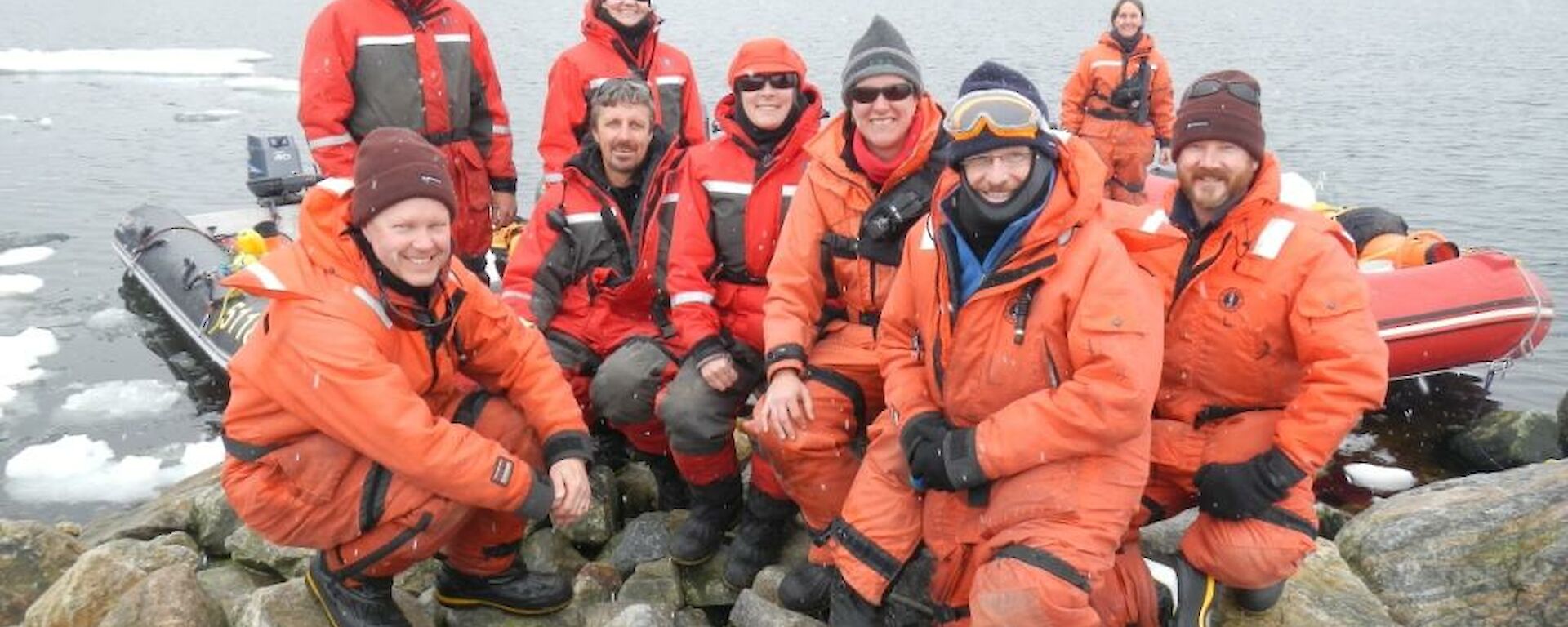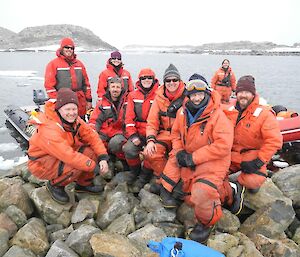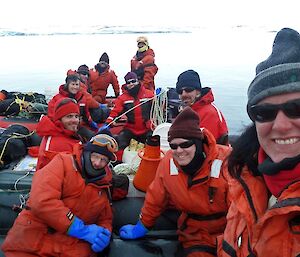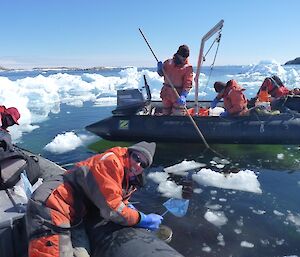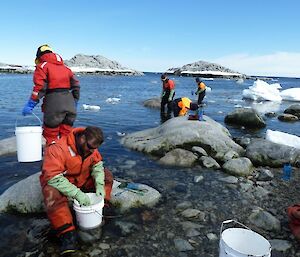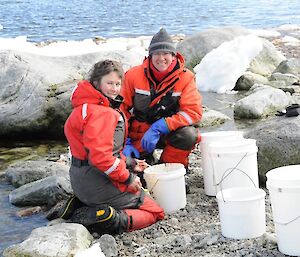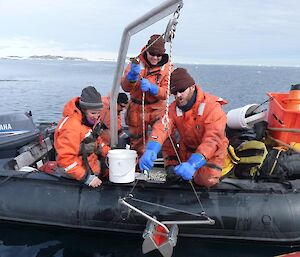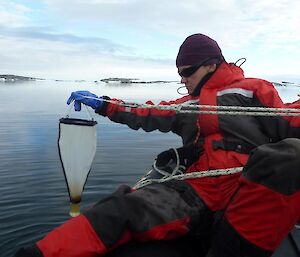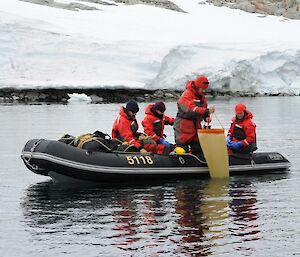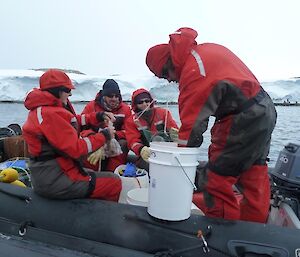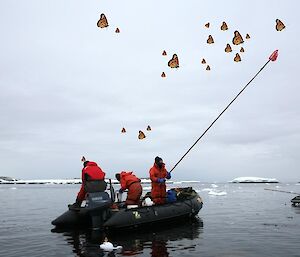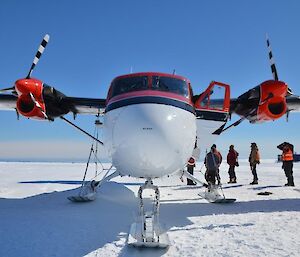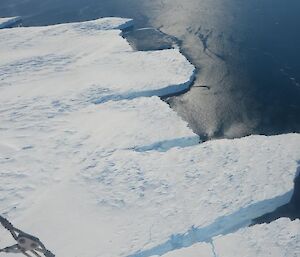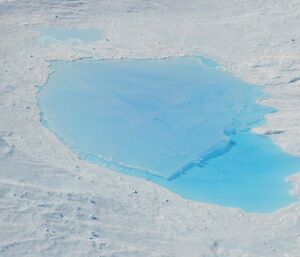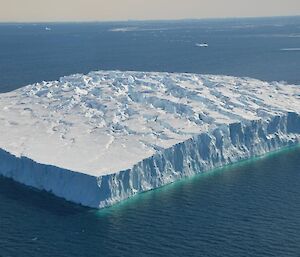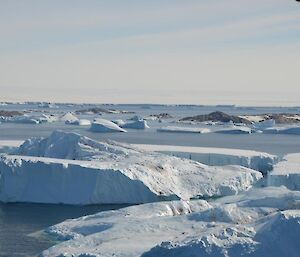The marine team of Cath King, Jane Wasley, Ashley Cooper, Patti Virtue, Nick Alexander, Ashley Miskelly, Peter Harrison, Kathryn Brown, and boating officer, Dave Pryce, have had a busy summer collecting an array of live invertebrates for experiments here at Casey, and to stock cultures in the new marine research aquarium facilities at Kingston.
The team have successfully employed a variety of collecting methods from the inflatable boats including dip netting, sediment scoops, bait traps, sediment grabs, intertidal rock collections and plankton tows in waters ranging between the Swain Group of islands and Browning Peninsula.
Invertebrates collected have included a variety of species of crustaceans (amphipods, isopods, tanaids and cumaceans), worms (polychaetes and nemerteans), molluscs (microgastropods) and echinoderms (brittle stars, sea stars and sea urchins).
So far, the team have successfully returned to Australia live invertebrates on two A319 flights. The invertebrates are reported by Rob King and Paul Armstrong to be happily living in their new home at Kingston! The new marine research aquarium facilities will enable scientists both at the AAD and in external collaborating institutes and universities to work on live Antarctic invertebrates year round.

